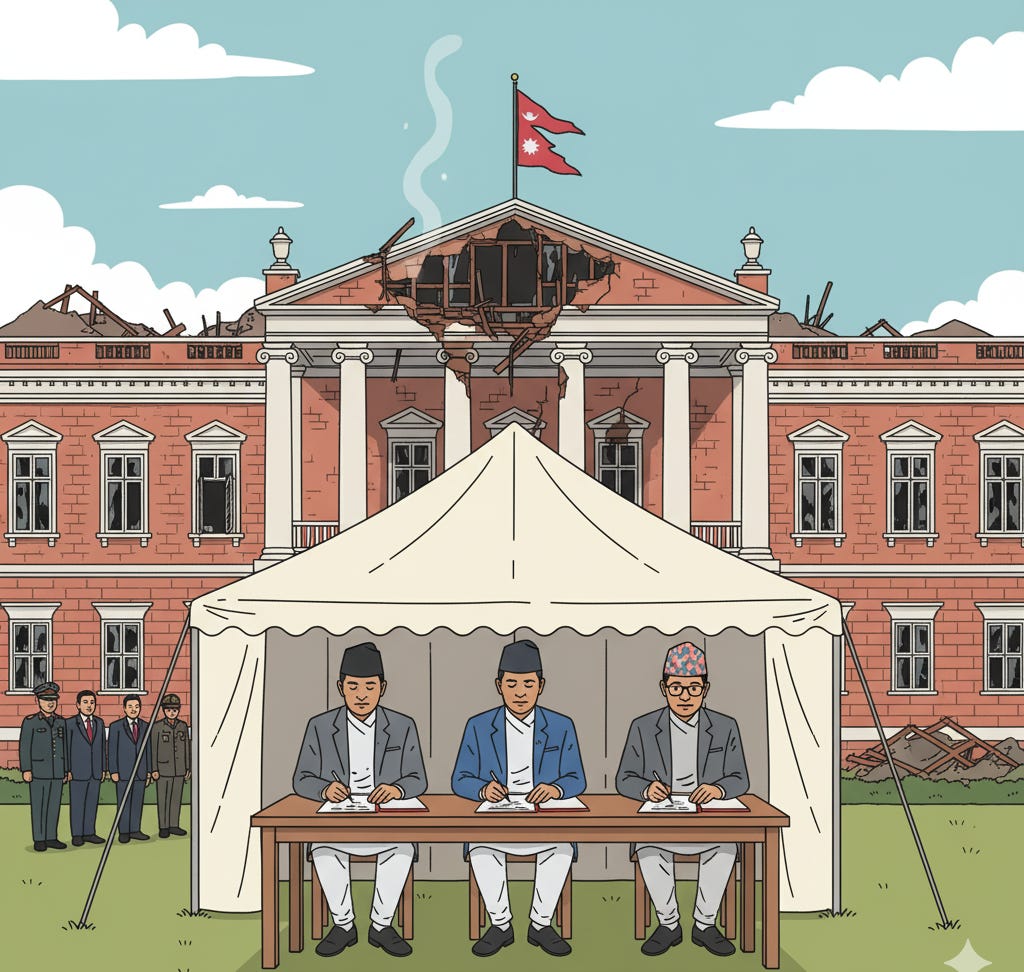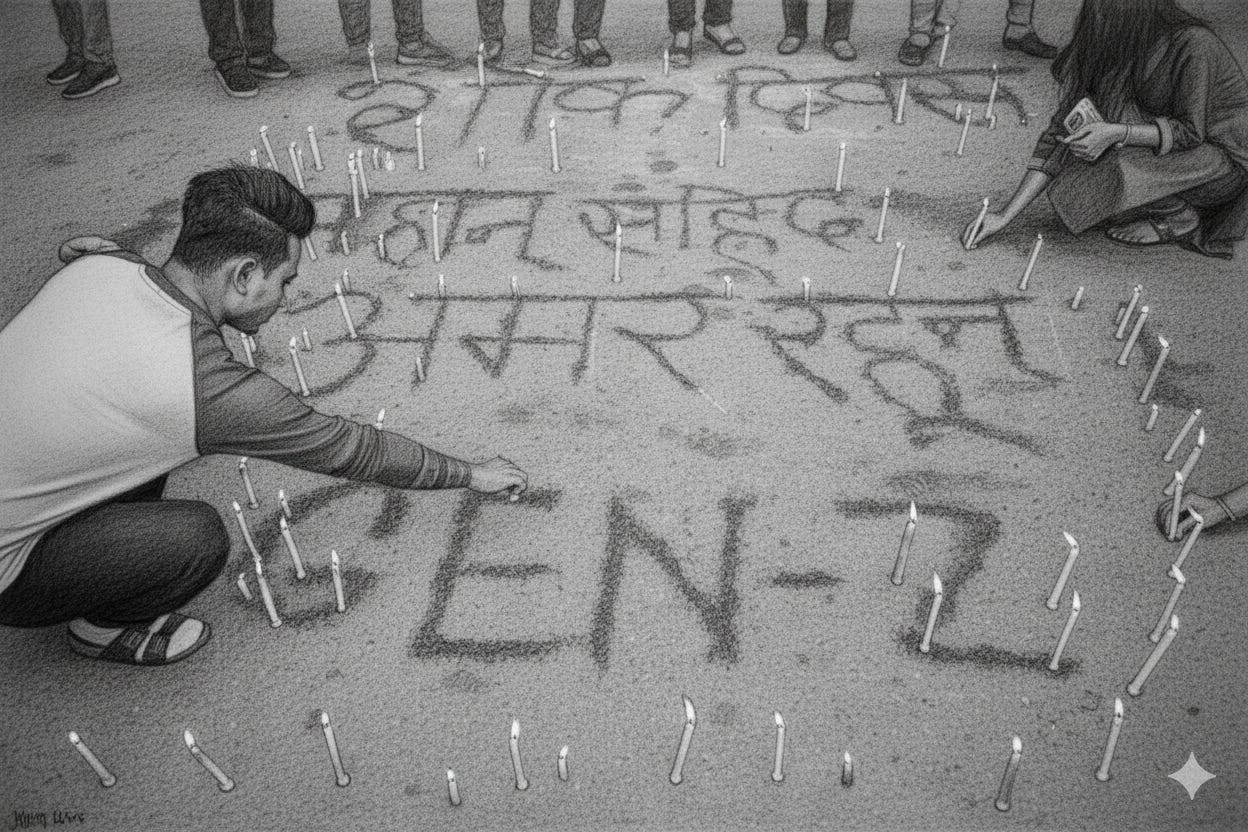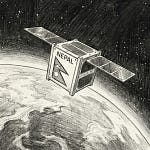After a week that pushed the reset button on Nepali politics, a new technocratic government is rolling up its sleeves for the ultimate cleanup job. From rebuilding torched ministries to tracking down thousands of escaped prisoners, their to-do list is extensive. Yet, amidst the chaos, glimmers of normalcy are already appearing as life cautiously returns to the streets. Of course, the nation is also juggling everything else, from sudden dengue outbreaks to festival-disrupting landslides. Let's dive into a truly monumental week in Nepal!
The New Government Takes Charge
In the wake of a political vacuum, former Chief Justice Sushila Karki was appointed to lead an interim government, a move aimed at restoring stability after days of unprecedented turmoil. She swiftly appointed a small cabinet of widely respected technocrats, with Rameshore Khanal taking charge of the Ministry of Finance, Kulman Ghising being entrusted with the portfolios for Energy, Physical Infrastructure, and Urban Development, and anti-corruption activist Om Prakash Aryal appointed as Minister for Home Affairs and Law (THT). In a landmark decision, Senior Advocate Savita Bhandari Baral was also appointed as Nepal's first female Attorney General, signaling a new chapter for the country's legal and political landscape (MyRepublica).

The selection of these ministers was widely seen as a direct response to the protestors' demands for proven competence and integrity.
Rameshore Khanal is a former Finance Secretary with over 30 years of experience, known for leading key reforms in government accounting and tax policy. In a powerful gesture of austerity, he announced he would not take a salary, official residence, or car for himself.
Kulman Ghising is an immensely popular public figure, celebrated for ending Nepal's chronic 18-hour-a-day power cuts during his previous tenure as head of the Nepal Electricity Authority.
Om Prakash Aryal is a prominent anti-corruption advocate known for his high-profile legal battles, including successfully filing a writ petition that led to the impeachment of a former chief of the anti-graft body, CIAA (Nepali Times).
Stepping into their roles amidst a national crisis, the new ministers took immediate and decisive action.
Finance Minister Khanal announced sweeping austerity measures, forming a task force to cut over 1,300 redundant projects and reallocate nearly Rs 100 billion to fund the upcoming election without foreign assistance (THT). Home Minister Aryal’s first decision was to declare a national day of mourning and provide financial relief to bereaved families. Minister Ghising began a multi-pronged effort, directing officials to manage the hundreds of burnt vehicles at Singha Durbar, to scrap contracts for long-neglected development projects, and to expedite the completion of the new Parliament building by December (MyRepublica).
The international community responded swiftly, signaling crucial support for the new administration. Prime Minister Karki held a telephone conversation with Indian Prime Minister Narendra Modi, who conveyed condolences and reaffirmed India's steadfast support for restoring peace and stability (THT). The United States also voiced its backing, with Ambassador Dean R. Thompson meeting PM Karki to reiterate American support for Nepal's peaceful and democratic path forward, a sentiment echoed by the Chinese Ambassador in a separate courtesy call (THT).
At home, the government faces a complex political landscape. The GenZ group that propelled Karki to power quickly voiced dissatisfaction with some ministerial choices and issued a list of demands, including the arrest of former officials, the formation of a high-level commission to investigate the wealth of leaders since 1990, and constitutional amendments for a directly elected Prime Minister (MyRepublica). Concurrently, the sidelined major political parties issued a joint statement denouncing the dissolution of Parliament as "undemocratic and unconstitutional" and demanding its immediate restoration, setting the stage for potential political friction (Nepali Times).
In her first major public address on Constitution Day, Prime Minister Karki sought to bridge this divide, framing the GenZ movement not as an attack on democracy but as a "measure of the health of our democratic system" and a reflection of youth dissatisfaction with corruption and poor governance (TRN). She clarified that her role was for "interim management" with the sole purpose of holding elections within six months and handing over power to a newly elected government, calling on all sides to unite for the great campaign of reconstruction (Nepali Times).
A Nation in Recovery
Before any rebuilding could begin, the nation paused to confront the profound human cost of the unrest. The new government’s first act was to officially declare those killed as martyrs, a deeply symbolic gesture to honor their sacrifice (THT). A national day of mourning was observed, with flags flown at half-mast at government offices and Nepali missions abroad. Across the country, citizens from all walks of life gathered for solemn candlelight vigils at places like Maitighar Mandala, paying tribute to the 74 people who lost their lives and seeking solace in a moment of shared grief (THT).
The economic toll of the destruction is staggering and widespread. The Hotel Association Nepal (HAN) reported preliminary losses exceeding Rs 25 billion, with dozens of properties vandalized in Kathmandu, Pokhara, Butwal and other cities, leaving over 2,000 workers jobless during the peak festive season (Annapurna Exp). Local governments also suffered catastrophic damage, with the Birgunj metropolis alone reporting losses of Rs 1.15 billion. The financial markets reflected the deep uncertainty, as the Nepal Stock Exchange (NEPSE) plummeted by 6% upon reopening, triggering three successive circuit breakers that halted all trading for the day (Onlinekhabar).
Assessing the sheer scale of physical destruction is a monumental task. A preliminary study by the Nepal Engineers’ Association found that key government buildings, including the Supreme Court, are structurally unsound after severe fire damage, warning that the basement of the Kathmandu District Court was particularly critical after burning for 72 hours (Onlinekhabar). The devastation extended to the ministers' quarters in Bhanisepati, where 27 modern buildings were completely destroyed by arson. In a show of solidarity, the engineers' association has offered to provide free technical assistance for reconstruction nationwide, while some ministries have begun resuming work from temporary locations (THT).
The path to recovery is severely complicated by an unprecedented security crisis. The nation's police force has been crippled, with over 218 police facilities in the Kathmandu Valley alone vandalized or burned, 117 police vehicles destroyed, and thousands of uniforms lost (MyRepublica). More alarmingly, protestors overran police armories, looting over 1,500 weapons, including SLRs and INSAS rifles. Former police officials have warned these weapons could be used in criminal activities, heightening public fear (Nepal News).
Compounding the security threat is the mass escape of inmates from prisons across the country. The Department of Prison Management confirmed that out of nearly 14,000 inmates who broke out from 27 different jails, more than 8,800 fugitives remain at large. Many of these escapees were serving sentences for serious crimes such as rape, drug trafficking, and homicide (THT). Authorities have issued public notices and are coordinating with the Department of Immigration to track down the escapees, but the large number still unaccounted for poses a significant and ongoing risk to public safety (MyRepublica).
Despite these immense challenges, concerted efforts to restore normalcy are yielding early results. Vital economic hubs like the Mechi Customs Office have resumed import-export services after staff procured new equipment (TRN). In districts like Jhapa and Chitwan, local governments are re-establishing police services in temporary buildings and urging transport entrepreneurs to resume operations. In a powerful symbol of resilience, Birgunj’s iconic Ghanta Ghar (clock tower) has been repaired and repainted, representing one of the first of many small but crucial steps on the long road to national recovery (Nepal News).
Other Developments
Health authorities are battling multiple serious disease outbreaks. Gandaki Province has issued an alert for simultaneous outbreaks of dengue fever and a rare, vision-threatening eye infection known as Shapu (THT). On the infrastructure front, continuous rainfall triggered landslides that have blocked the Baglung section of the Kaligandaki Corridor, bringing traffic to a standstill (Khabarhub).
The recent crisis was exacerbated by an "infodemic" of online misinformation that fueled public panic, highlighting a critical need for greater media literacy (Ktm Post). For Nepalis abroad, a new crisis emerged in Portugal, where immigration authorities began canceling residence permits of those alleged to have entered the country irregularly, creating fear and uncertainty within the community (Onlinekhabar).
Let’s connect
Enjoying this issue? 📩 Share it with a friend & let’s keep Nepalis worldwide in the loop! Got thoughts? Hit reply—we’re all ears! Or let us know what you think via our Feedback form or follow us on Facebook | LinkedIn
P.S. Got a story or issue you'd like us to cover next week? Drop us a reply — we're building this space together.
About Nepali Diaspora Digest:
The Nepali Diaspora Digest connects the global Nepali community with curated news, insights, and stories that matter most. Join us as we celebrate and explore the diverse voices and achievements of Nepalis worldwide.
Partner shout out
belayat.uk: helping Nepalis connect in the UK on jobs, housing, events and finding local Nepali owned businesses















